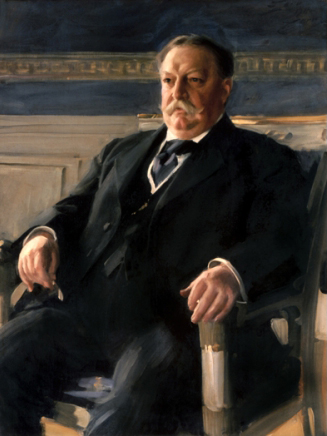
President William Howard Taft Biography
William Howard Taft, the 27th President of the United States, is often overshadowed by his charismatic predecessor, Theodore Roosevelt. However, Taft’s unique personality and achievements deserve recognition. From his humble beginnings to his influential presidency and beyond, Taft left an indelible mark on American history. This biography delves into Taft’s life before, during, and after his presidency, exploring the man behind the office.
Early Life and Education:
Born on September 15, 1857, in Cincinnati, Ohio, William Howard Taft grew up in a family with a strong legal background. His father, Alphonso Taft, was a prominent attorney who later served as Attorney General and Secretary of War under Ulysses S. Grant. Against his father’s wishes, Taft pursued law and political science instead of following in his footsteps. He attended Yale College and subsequently studied at Cincinnati Law School, where he developed a deep understanding of the legal system that would shape his future career.
Pre-Presidential Career:
Taft’s rise in politics was steady and impressive. He served as a lawyer, a judge, and eventually became Solicitor General, appointed by President Benjamin Harrison. In 1900, President William McKinley nominated him as Governor-General of the Philippines, overlooking his desire to serve on the Supreme Court. During his tenure, Taft undertook significant reforms and worked towards granting the Philippines greater self-governance.
The Presidency (1909-1913):
Taft’s presidency was marked by notable achievements and challenges. Embracing his pragmatic approach, he aimed to continue Roosevelt’s progressive policies while adhering to a more conservative ideology. As President, Taft focused on trust-busting, tariff reform, civil service reform, and environmental conservation. He played a crucial role in the establishment of the Department of Labor and helped shape the Sixteenth Amendment, enabling the implementation of federal income tax.
However, Taft’s presidency was not without controversy. He struggled to balance his loyalty to Roosevelt’s legacy while forging his own path. The division within the Republican Party led to a heated primary battle with Roosevelt running against him as a Progressive Party candidate in the 1912 election. This competition ultimately led to the election of Democrat Woodrow Wilson.
Life After Presidency:
Following his defeat and subsequent retirement from politics, Taft undertook a remarkable second chapter in his life. In 1921, President Warren G. Harding nominated him for the position he had long coveted – Chief Justice of the Supreme Court. Taft accepted the appointment, becoming the only person in history to have held both the presidency and the position of Chief Justice. In this role, he worked tirelessly to modernize the judiciary and streamline its processes, leaving a lasting impact on American jurisprudence.
Legacy and Death:
William Howard Taft’s legacy is one of legal acumen, political achievements, and steadfast dedication to public service. His contributions to trust-busting and tariff reform set the stage for further progressive reforms in the years that followed. Taft’s term also had lasting implications for the environment, as he expanded national parks and protected millions of acres of land.
Taft’s health deteriorated in his later years, but he continued to be an influential figure until his death on March 8, 1930. His funeral became a national event, with dignitaries from around the world paying their respects. Taft’s commitment to public service and his deep love for the United States continue to inspire generations of Americans.
Time in Office (1909-1913)
Born: September 15, 1857
Died: March 8, 1930
Wife: Helen Herron
Party: Republican
Vice President: James Sherman
Religion: Unitarian
Reference Links
William Howard Taft historic site
William Howard Taft on Whitehouse.gov
William Howard Taft biography
Facts about William Howard Taft